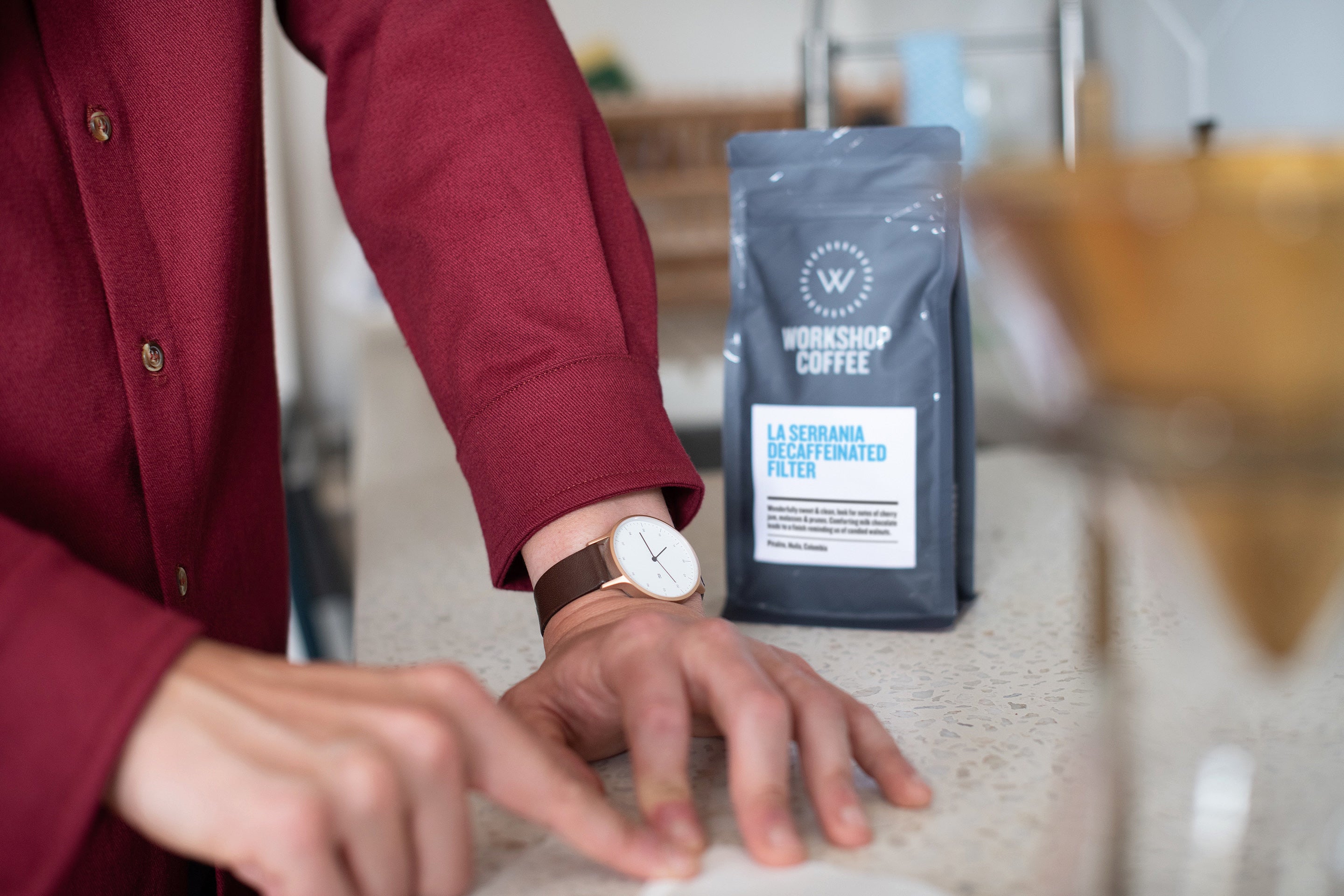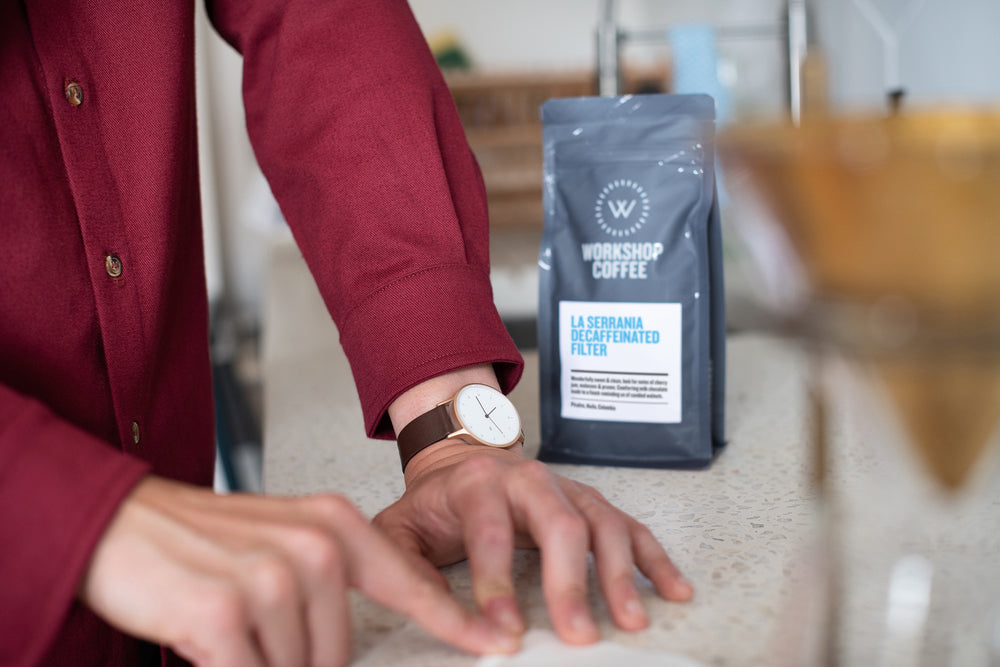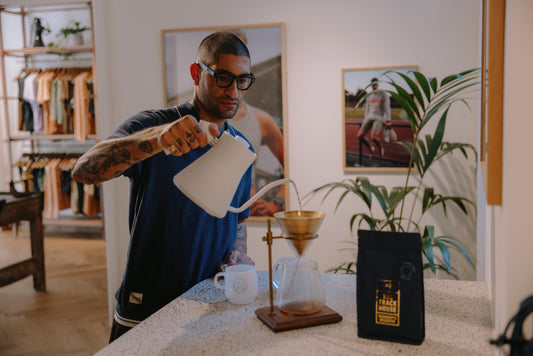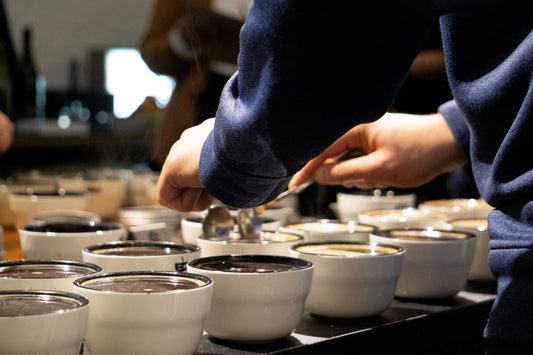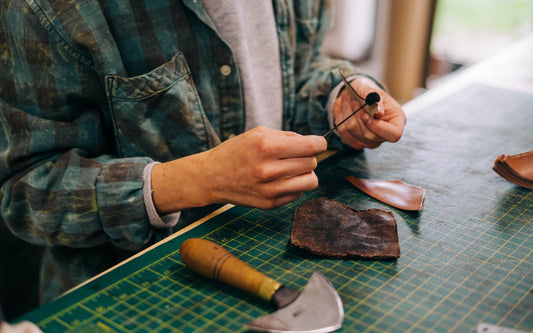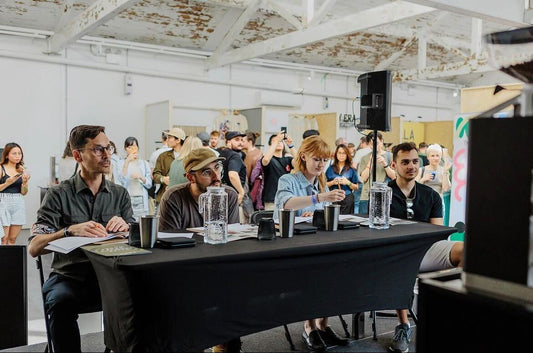 Decaffeinated coffee remains a taboo amongst some people specialty coffee world. I haven't seen any other coffee trope so ubiquitous, whether tattooed onto a forearm, scrawled on an A-board or emblazoned on a diner mug, as the "Death Before Decaf" motif. This is strange to me. Coffee lovers who are eschewing caffeine, either temporarily or permanently, but still seeking that unparalleled experience that coffee delivers, should be welcomed with arms opened wide, as they're here for what really gets our hearts (metaphorically) pumping: flavour!
Decaffeinated coffee remains a taboo amongst some people specialty coffee world. I haven't seen any other coffee trope so ubiquitous, whether tattooed onto a forearm, scrawled on an A-board or emblazoned on a diner mug, as the "Death Before Decaf" motif. This is strange to me. Coffee lovers who are eschewing caffeine, either temporarily or permanently, but still seeking that unparalleled experience that coffee delivers, should be welcomed with arms opened wide, as they're here for what really gets our hearts (metaphorically) pumping: flavour!
We're going to take a look here about how we select our decaffeinated options, and also why we branched out into developing a secondary roast curve for filter coffee brewing with our decaf range, to complement our existing espresso roast style.
First up, we need to look briefly at what caffeine actually is. For the TLDR crowd amongst you, scroll down to the bottom to watch our video.
What is Caffeine?
A bitter, psychoactive compound, caffeine exists naturally in coffee and acts as an insecticide deterrent to prevent bugs and other pests from damaging its fruit, flowers and leaves. Whilst toxic to insects it sadly isn't enough to prevent insect damage entirely.
When it comes to preparing and drinking a cup of coffee, the amount of caffeine it contains is going to vary depending on the origin and variety of coffee, how much you actually use to brew your cup and the quality of your extraction (i.e. how much soluble material was taken from the grounds by your water during the brewing process). For more information and detail on caffeine, we'd recommend a visit to Coffee Chemistry's website and their Caffeine in Coffee section.
Can Decaffeinated Coffee Occur Naturally?
There are species and varieties of coffee that are very low in caffeine.
Eugenioides, which is a species of coffee that actually parented Arabica along with Robusta, and a variety of Arabica called Laurina (or Bourbon Pointu) both produce lower caffeine coffees, not entirely caffeine free but containing less than most Arabica varieties. They are not grown on a large commercial scale and so you might only see them pop up on roasters' offer lists once in a blue moon. They're really interesting to taste if you can get your hands on them, but to reiterate, they are not going to be caffeine free.
Why we Showcase Decaffeinated Coffee
To include those who might need to limit or completely eliminate caffeine from their diet we want to be able offer a cup of coffee that caters to these needs and is also delicious in and of itself.
A broad trend amongst coffee drinkers that we've noted over the last few years is that more and more people are becoming dual-drinkers. Rather than opting solely for caffeinated coffee throughout the day, or being exclusively decaf drinkers, more customers are brewing from their primary stock of regular coffee throughout the day but ensuring they have a bag of decaf in rotation to dip into in the late afternoon or evening.
How is Coffee Decaffeinated?
There are several ways you can decaffeinate green coffee, including the Swiss Water method, Super Critical CO2 and the Methelyne Chloride method. However, our preferred process is the Sugar Cane Ethyl Acetate (EA) method.
Ethyl Acetate is a compound that is produced naturally in fruits and vegetables such as apples, pears and bananas. An ester with a smell not unlike that of pear drop sweets, ethyl acetate is the primary active solvent in what can be marketed as a "natural decaffeination" method and is the one we've chosen exclusively for our decaffeinated coffees for the last 6 years. We've been working exclusively with lots from Colombia that are processed at the Descafecol plant, the only one of its kind in the country, and there are several reasons why we think this is the best method to use.
Firstly, the coffee doesn't need to be shipped twice. The coffee is grown and harvested in Colombia before being moved to the decaffeination plant and then can be sent to use here in Europe. Avoiding a stop-off in another country for further processing limits the time coffee seeds spend in a container and therefore maximises the freshness and extends the shelf life of the green coffee. Not only that, but carrying out decaffeination in the same country as the coffee is grown provides an additional industry and income stream at origin. Fewer destinations en route also helps to reduce the ecological footprint of getting the coffee to us.
Of equal importance for us, though, is taste and flavour. We've found that this process keeps the coffee's characteristics more intact, and the flavour imprint from the EA method is less detectable than others. At times, experienced cuppers and tasters haven't recognised that our coffee on the table has even been decaffeinated.
How the Process Works
After being delivered to the decaffeination plant, the first step in the process is that the green coffee is steamed in order to make it swell up, helping to remove the silver skin layer. This is a very fine, papery layer that clings to the green seeds within the parchment layer. It's then moistened with hot water and we begin to see the beginning of hydrolysis of caffeine, where it starts to loosen its bonds with the salts of chlorogenic acids in the coffee.

Once this has taken place, mountain spring water is mixed with the Ethyl Acetate. This is produced from fermenting sugar cane and is the active solvent in the process. This circulates throughout the tank containing the beans and bathes them continually until 99.9% of the caffeine has been targeted and dissolved away.

Next, any traces of Ethyl Acetate need to be removed and this is done by passing pressurised steam through the coffee before it's placed into large, vacuum-sealed drums and dried down once again until they reach between 10% and 12% moisture, representing a stable level that allows them to be shipped.
The final stage involves adding a protective layer of carnauba wax. This vegetable wax seals the seeds again after what is quite an invasive process that aids them in their journey to our roastery.
The caffeine that's removed during the process is then sold on to pharmaceutical companies and soft drink manufacturers, with Descafecol selling it by the bag themselves.
Our Approach to Decaffeinated Coffee
When it comes to roasting the decaffeinated coffees that we've purchased, there are a few factors we need to take into account. The green coffee is visibly different from its caffeinated counterpart, being a deeper, darker green colour. This in turn impacts some of the physical analysis we do here in the roastery. Some of the numbers and metrics we check during quality control analysis look very different to what we'd normally expect from regular coffees in our range.

Thankfully, we're not just using visual and auditory cues in our roasting process, and through the use of multiple temperature probes, pressure gauges and roasting software, we're able to design consistent roast profiles that give rise to truly delicious, well balanced espresso and slim, clean cups of filter coffee. The fact that our lots are highly uniform with good density means that creating a balanced and consistent flavour from batch to batch is fairly straight forward.
The decision to offer both a decaffeinated espresso roast and a decaffeinated filter roast is relatively simple. Historically, we'd been solely roasting a decaffeinated espresso coffee as a means of offering non-caffeine drinkers the ability to enjoy a cappuccino or a latte in one of our own coffeebars or when visiting our wholesale partners. However, growing numbers of our guests and customers were taking bags home with them and asking how to get the best from it using their V60 or French Press.
For a while, we altered our brewing advice to ensure they were able to get the most delicious results from a slightly more developed roast profile, but in 2018 we made the decision to design and offer a specific filter roast as well. The result is something that adheres to our usual brew recipes and offers a really clean, balanced, flavoursome cup.
Whilst not subject to the same pace, our decaffeinated coffee range continues to rotate as the year progresses. You can view our current offering here.
Share:


